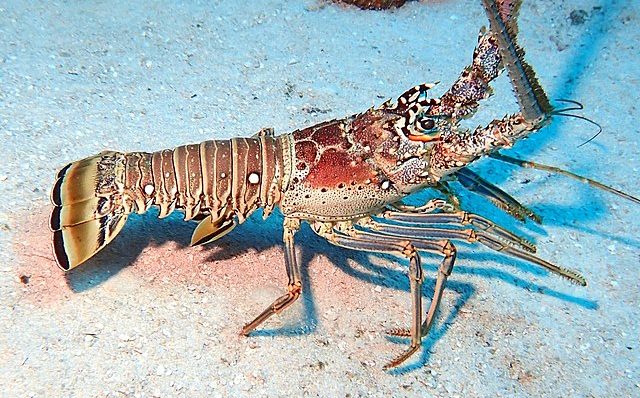Belize’s Fisheries Department has allocated the Belize spiny lobster season a timeline of July 1, 2024 and February 28, 2025. This is per the Fisheries Resource Act and the Subsidiary Regulations of the Caribbean country.
With the announcement came regulations that will last throughout the fishing period on minimum size, weight and shell maturity.
Fishermen can only harvest crustaceans with at least 3-inch long outer shells while the tail weight minimum is 4 ounces.
Under certain conditions, the government recommends relocation of accidentally caught crawfish below 3 inches long into local aquaculture facilities.
Regarding shells, only hard-shelled specimen that are past moulting will be legal to fish. Moulting is a period when a lobster grows out of its old shell and grows a new soft shell.
Additionally, “berried” female lobsters with eggs are illegal to fish, nor is it legal to remove eggs from females.
Lobsterfest
Rules and regulations aside, the spiny lobster season always dawns the appetizing lobsterfest in San Pedro, Placencia and Caye Caulker.
In 2024, the dates for the festival are July 5 through 17, with miscellaneous celebrations throughout the fishing year.
The lobsterfest overlaps the season’s start when appetites are high and fresh lobster prices peak at 20 Bze dollars ($9.84) a pound. As the season progresses, the price ameliorates to between 17 and 18 Bze dollars ($8.36-8.85), a real bargain.
In comparison, spiny lobster prices further north in the Caribbean-bordering Florida in summer are usually at least $16.99 a pound.
But this comparison does not mean that lobster is cheap in Belize. Indeed, restaurants charge at least 40 Bze dollars ($19.67) for a pound of cooked crawfish.
Apart from the changing price landscape, the festival in Belize helps crustacean foodies mingle with fishermen for orders. Here they also attend lobster-themed beauty contests and see the biggest catch of the early season.
Ultimately, the 8-month return of the Belize lobster season will help recoup peak production of the 1980s at 1000 tonnes. As the statistics below reveal, the industry has recovered after a slight dip in the late 1990s’ and early 2000s.
Belize Spiny Lobster Statistics
Fisheries represented 3% of Belize’s GDP in 2015, with the dominant fisheries being Caribbean spiny lobster and sea conch. According to the Ministry of Blue Economy and Civil Aviation, Belize produced 2,257,673 pounds (1,026.22 tonnes) of live spiny lobster in the 2020-21 season. Of this amount, 677,490 pounds (307.95 tonnes) made up lobster tails and 225,203.30 pounds (102.37 tonnes) whole lobster. The total earnings from all lobster fishing (including spiny lobster) in the 2020-21 period was U$12.5 million. In comparison, in 2001 Belize earned half this amount at 12.9 million Bze ($6.45 million at the time’s exchange rate). This represents a doubling of production and revenue growth between 2001 and 2021.
Does Belize have other lobster species other than Caribbean spiny lobster?
Though Caribbean spiny lobster (Panulirus argus) is predominant, Belize also boasts spotted spiny lobster and a trio of slipper lobster species. In 2016, the Caribbean spiny lobster species led production at between 400,000 and 600,000 pounds (181.8- 272.7 tonnes) in tails alone.
How does Belize fish lobster?
Around 23% of all lobster landings in the Caribbean nation emanate from around 2,700 artisan fishermen in small sailing boats. The rest come from commercial company landings.
How big are lobster exports for Belize?
Lobster exports indicate the highly agricultural economy of Belize, for all top 10 exports that include sugar, bananas, concentrates and seafood are agriculture-based. The bulk of lobster catches in Belize go into export, especially to the United States. In 2022, the country raked in U$24.1 million from lobster tail exports alone, the fifth biggest national export. Whole lobsters came in 9th at U$10.1 million.
